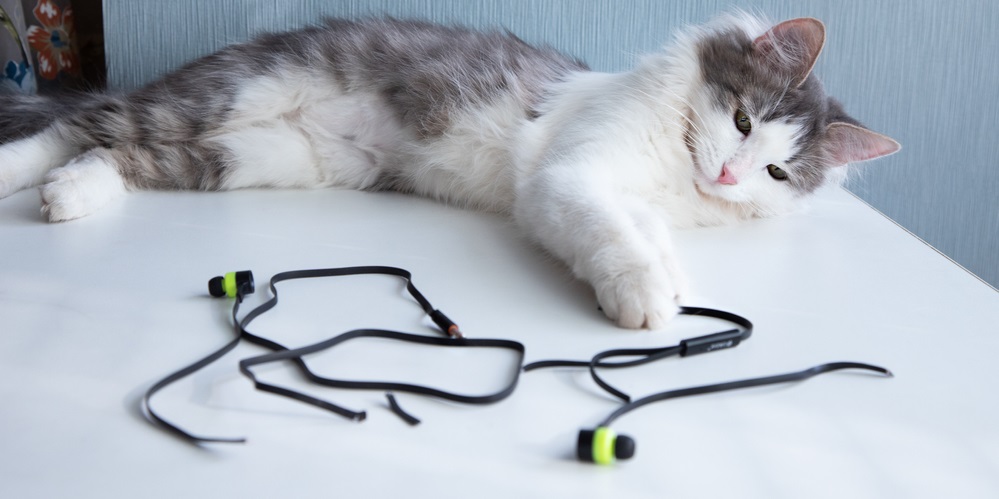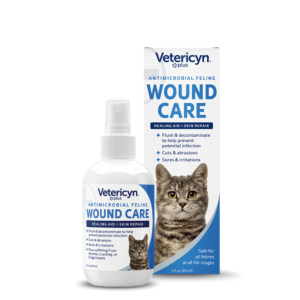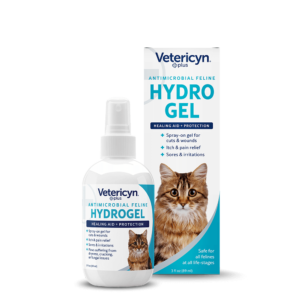Updated 6/25/2025
As a pet owner, keeping your kitty happy and safe can feel like a full-time job! They love poking their noses into anything and everything. And, sometimes, that can lead to cat wounds and injuries.
Outdoor and even indoor cats face occasional injuries, such as burns or even cat abscesses from playing with other cats.
If your cat does get burned, you need to know what to do and how to treat it. This brief will tell you exactly that. For any burn, contact your veterinarian for advice.
Types of Burns
Your cat may be at risk of four primary types of cat burns:
- Chemical – They come into contact with poisonous, corrosive chemicals or fumes like a house cleaning product, paint thinner, pesticide, or fertilizer.
- Electrical – They chew on plugged-in wires and get shocked. . Electrical burns can lead to systemic problems within the first 24-48 hours after the injury and may require hospitalization for monitoring.1
- Thermal – They touch something hot like an iron, the stove, the fire from a candle, a hot pan, and car engines and mufflers
- Mechanical – Friction from a rope or carpet rubbing against their skin.
Burns can be tricky. You not only have to worry about the injured site, but you also have to consider secondary issues like respiratory problems or poisoning from ingestion.
Because of this, cat burns are one of the injuries that often require a trip to the vet just to be safe. Even a minor first-degree burn could have complications. So, it’s better to be overly cautious.
When it comes to burns, your first task is to identify the affected area and what caused the burn. A chemical burn may need to be treated differently than a thermal burn. Typically, these all have unique symptoms. For example, electrocution burns usually involve , the mouth and whiskers and are sometimes associated withrespiratory issues.
Degree of Cat Burns
Burns are classified based on the three-degree system used in humans.2 The higher the degree, the deeper the damage:
- First-degree burns – These are superficial burns that redden the top layer of skin but leave the lower layers undamaged. There may be singed or missing hair and pain. That said, these types of burns can often be safely treated at home and will likely heal within a couple of days.
- Second-degree burns – These are moderate burns that redden the top layer of skin, cause blistering, and may damage several layers of skin beneath. Such burns can leave a cat in significant pain and typically require veterinary care and a few weeks of healing. If you see a blister on your cat’s body where they may have been burned, take them into the veterinarian for further examination.
- Third-degree burns – These are severe burns that could be life-threatening. They penetrate deeply into the skin, damaging the subdermal tissue. Edges of skin may be blackened. At this stage, a cat may go into shock and may require skin grafts. Infections are common complications and scarring will be permanent.
If your cat displays the symptoms of second- or third-degree burns, seek veterinary medical assistance immediately. In addition to the burn itself, there are other health concerns such as smoke inhalation or chemical ingestion. The full extent of damage from burn wounds isn’t always immediate—tissue injury may worsen before healing begins. Wound dressings, antibiotics, and pain medication are needed for second degree burns. Third degree burns require intensive care in the hospital and at-home wound management afterward.1

Treating First-Degree Burns at Home Burns
Follow these steps:
- Flush the wound – Cold water can help with pain and prevent further skin damage. Immerse the burn area in cool water if possible, or softly press a wet cloth to the area, occasionally pouring water over it. Treat for approximately 20 minutes. This may soothe the area and remove debris.
- Dry the wound area – After a cool rinse or soak, let the affected area dry.
- Add Antimicrobial Spray or Gel – An antimicrobial wound care product meant for animals can clean, cool, and soothe the wound, jumpstarting the healing process. Do not use products for humans on pets.
- Check on the injury – Monitoring your cat’s behavior and pain levels. Cats will recover just fine from the majority of first-degree burns. But there may be complications that require veterinarian assistance.
Treating Minor Chemical Burns
All animals affected by a chemical burn should be immediately evaluated by a veterinarian, but you can take these steps at home first, if the affected area is small:
- Protect Yourself – Be sure to put on gloves and goggles before handling your cat or potentially harmful chemicals to avoid exposing yourself to the chemical.
- Rinse off the chemical – Use cool tap water to rinse off the harmful chemical.. Only rinse affected areas if it won’t run into the eyes, mouth, or ears. Otherwise, ring a wet towel over the affected area to rinse the chemical off. Some chemicals have specific antidotes that may be listed on the container. Do not use ice or other home remedies you may find online.1
- See your vet – Cover the burn area with a wet cloth or a non-stick bandaid and take your cat to the veterinarian. Bring the chemical or the label with you so the vet can provide better treatment.

Cat-Proof to Prevent Burns
Help protect your cat from possible burns inside and outside your home with these tips1,3:
- Train them not to jump onto counters (i.e., the stove) or chew on cords.
- Keep chemicals out of reach in locked cabinets.
- Clean spills right away, inside and outside.
- Cover electrical wires.
- Tap your hood, honk your horn, and look under your car during cold weather before starting the engine.
To be prepared for anything, you should have Vetericyn Plus® Antimicrobial All Animal Wound and Skin Care liquid and hydrogel on hand. It safely, and gently cleanses and hydrates minor burns to help prevent infection and promote healing, and it supports at-home care after a hospital stay for more severe burns.
Looking for more ways to care for cat issues? Check out our guide on treating a cat abscess effectively.
 Reviewed by Dr. Kathy Adamson
Reviewed by Dr. Kathy Adamson
Dr. Kathy Adamson earned her bachelor’s degree from the University of Notre Dame and her Doctor of Veterinary Medicine degree from the University of Wisconsin-Madison School of Veterinary Medicine.
She completed a one-year small animal medicine and surgery internship at the North Carolina State College of Veterinary Medicine. Alongside her studies, Kathy worked in a research lab, contributing as an author and co-author to various journal articles.
She has also pursued medical writing and editing certification through the University of Chicago Graham School. Currently, she runs KMA Veterinary & Medical Writing, a freelance medical writing company, serves as the Digital Content Manager for the Greater Chicago Area Chapter of the American Medical Writers Association, is a member of the AMWA Communications Committee, and enjoys writing about healthcare topics for people and their cherished pets.
![]() https://www.linkedin.com/in/kathyadamsondvm/
https://www.linkedin.com/in/kathyadamsondvm/
Sources:
- Thomas J. Burns in cats. PetMD. Updated December 14, 2022. Accessed May 21, 2025. https://www.petmd.com/cat/emergency/accidents-injuries/burns-cats
- VCA Hospitals. Burns in Cats. https://vcahospitals.com/know-your-pet/burns-in-cats
- WDBJ7. Check your car for cats in cold weather. YouTube. Published November 20, 2023. Accessed May 21, 2025. https://www.youtube.com/watch?v=yYN3nkk6MAw


